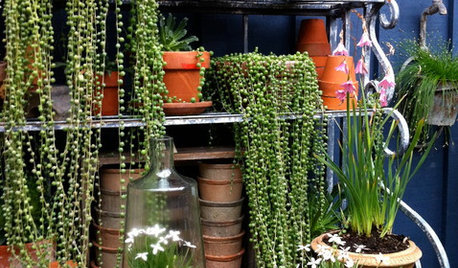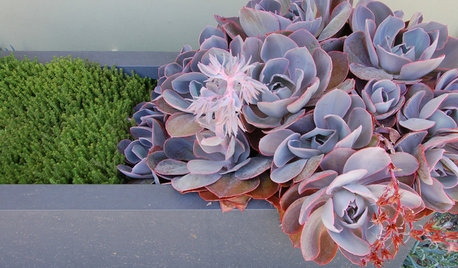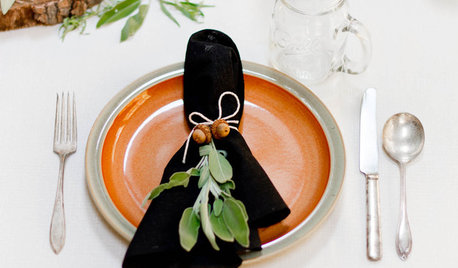What causes string-of-pearls? Protein Poisoning? Cold?
antoniab
13 years ago
Related Stories

HOUSEPLANTSCascading Succulents Bring Fun Shapes to Your Indoor Garden
For eye-catching spillers with delicate beauty and minimal needs, it's hard to beat these 2 trailing houseplants
Full Story
FLOWERS AND PLANTSHydrangea Arborescens Illuminates Garden Borders and Paths
This long-blooming eastern North American native shrub finds a home in landscapes around the world
Full Story
HOUSEPLANTS10 Top Plants to Grow Indoors
Brighten a room and clean the air with a houseplant that cascades artfully, stretches toward the ceiling or looks great on a wall
Full Story
CONTAINER GARDENS3 Steps to Creating Quick, Easy and Colorful Succulent Containers
Take a bright container, add a colorful succulent or two and have a professional, summery design in minutes
Full Story
PETSPet-Proofing Your Home: A Room-by-Room Guide
Not all pet dangers are obvious. Keep furry friends safe and sound by handling all of these potential hazards
Full Story
MATERIALSInsulation Basics: What to Know About Spray Foam
Learn what exactly spray foam is, the pros and cons of using it and why you shouldn’t mess around with installation
Full Story
WINDOWSHow to Ditch the Drapes and Let Your Windows Shine
If your home has beautiful windows and you don’t need to hide a view, consider dressing them in these elegant, creative ways
Full Story
SUCCULENTSGrow a Garden of Succulents for Easy Beauty
Low-water plants in a wide range of colors, shapes and sizes? Sign us up — and check out our faves here
Full Story
LIFEHow to Outsmart Backyard Critters
Learn to think like a raccoon, skunk or squirrel to keep your home safe and your garden intact
Full Story
Sponsored
More Discussions






antoniabOriginal Author
borderbarb
borderbarb
antoniabOriginal Author
antoniabOriginal Author
borderbarb
antoniabOriginal Author
borderbarb
alabamanicole
smalltowngal
sbryce_gw
randomz
steamyb
antoniabOriginal Author
pjames
antoniabOriginal Author
randomz
11otis
steamyb
antoniabOriginal Author
pjames
steamyb
randomz
smalltowngal
steamyb
randomz
pjames
sbryce_gw
randomz
equinoxequinox
steamyb
smalltowngal
randomz
antoniabOriginal Author
wendrew8
randomz
equinoxequinox
hummersteve
harry757
monomer